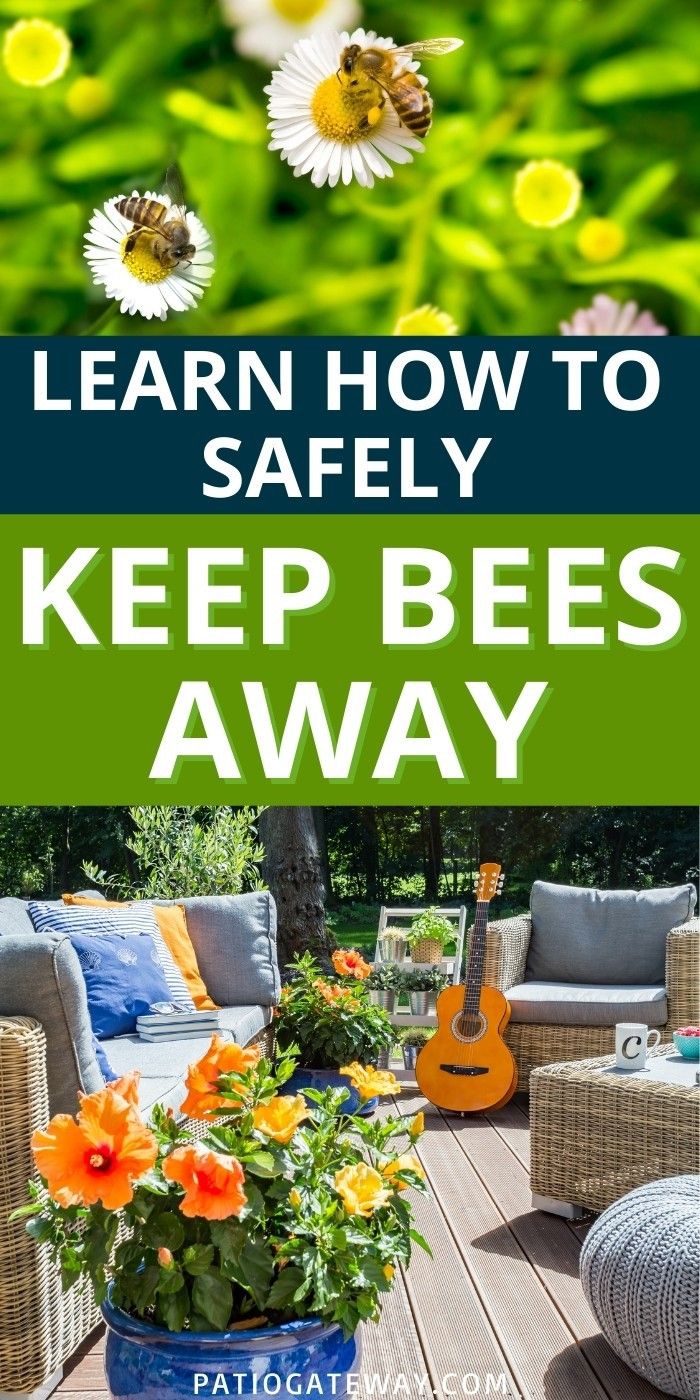Bees are vital to our ecosystems, playing a crucial role in pollination and the overall health of our gardens. However, an overabundance of bees can sometimes lead to discomfort or safety concerns for those who spend time outdoors. Striking a balance between maintaining a bee-friendly environment and enjoying one’s garden without fear can be achieved through natural methods. This article explores strategies to keep bees at bay, enhancing your garden’s ambiance while ensuring safety and tranquility.
Understanding Bees: Nature’s Essential Pollinators
Before delving into natural deterrents, it’s essential to recognize the unique role bees play in our gardens and environment. These industrious insects are responsible for pollinating a myriad of plants, making them indispensable for fruit-bearing crops, flowering plants, and ornamental gardens. Intended primarily for the health of the ecosystem, bees are often misunderstood. While they are typically non-aggressive, certain conditions may provoke their defensive behaviors, particularly during blooming periods when food sources are abundant.
To accommodate both the garden’s vitality and the comfort of its caretakers, one must consider certain proactive measures to minimize bee interactions without harming these essential creatures.
Essential Precursors: Assessing Your Garden Environment
Understanding the layout and composition of your garden is a foundational step in repelling bees. Bees are drawn to particular scents and colors, so assessing your plant selections can pave the way for more controlled interactions. Bright, vibrant flowers, especially in clusters, attract bees. Consider strategically placing less enticing, bee-repellent plants around the more appealing ones.
One effective preventive measure is the inclusion of plants with strong scents such as mint, basil, and marigolds. These provide a delightful fragrance for humans while emitting olfactory signals that deter bees. Additionally, an examination of water sources, such as birdbaths or improperly covered trash cans, can be instrumental in reducing the allure for bees. Standing water serves as a magnet; therefore, ensuring adequate coverage and cleanliness is vital.
Offering Alternatives: Natural Bee Deterrents
Many natural substances and methods serve as formidable barriers against bees. Understanding these deterrents can enhance your gardening experience while promoting a more relaxed environment.
Aromatic Aversion
Utilizing potent scents that bees typically dislike can naturally mitigate their presence. Essential oils derived from peppermint, citronella, eucalyptus, and even garlic have proven effective. Spraying diluted solutions of these oils around garden borders can create a fragrant boundary that discourages bees from entering.
Another effective approach involves the strategic placement of herbs. Herbs such as rosemary, sage, and thyme not only serve culinary purposes but also act as natural pest repellents. Incorporating these herbs into your garden not only heightens your cooking experience but significantly lowers the chances of bee encounters.
Visual Discrepancies
Bees are heavily reliant on visual cues when foraging. Therefore, altering the visual landscape can lead to decreased interest from bees. Implementing a variety of foliage textures and colors, particularly those that are less appealing to bees, can create visual distractions. Consider integrating plants with cooler tones, such as blues and greens, that do not evoke the same attraction as warm, vibrant colors.
Physical Barriers
Installing physical barriers, such as floating row covers or netting, can provide instant relief from bees while allowing beneficial insects to access your plants. These barriers are particularly useful during peak bee activity periods, such as flowering seasons. They provide a serene gardening experience while ensuring the growth and health of your crops.
Transforming Your Space: Creating a Bee-Inclusive, Yet Safe Garden
Your garden can resonate with harmony and serenity without compromising bee populations. Establishing designated bee-friendly zones can turn the tide by redirecting their activity to specific areas while keeping other sections bee-free.
Pollinator Plants Away
Planting flowers exclusively attractive to bees, such as sunflowers or lavender, away from primary gathering areas can divert their attention. Creating a vibrant, pollinator-friendly zone in one corner of the garden fosters an inviting habitat while leaving other areas free from unintended visitors. This not only reduces anxiety around areas frequented by humans but also supports the ecological balance.
Water Features: A Double-Edged Sword
While water features are generally welcoming in a garden, they can also serve as hotspots for bees. Providing alternative water sources away from social gathering spots is crucial. Shallow dishes filled with rocks or marbles can furnish bees with resting platforms while directing them away from human activity. Additionally, maintaining coverage over these areas during peak bee activity can keep the environment safe for casual gardening.
Encouraging a Diverse Ecosystem
Encouraging a diverse range of insects can help establish a more balanced ecosystem in your garden. Attracting natural predators of bees, such as wasps, can create an environment conducive to minimizing bee populations. While it may seem counterproductive, fostering an inclusive insect environment ultimately reduces the dependency on any one species, balancing the floral interaction in your garden.
Conclusion: A Harmonious Garden Experience
Maintaining a peaceful garden experience while coexisting with bees necessitates a multifaceted approach. Understanding the habits and preferences of bees informs not just defensive tactics but empowers gardeners to create spaces rich in biodiversity. Employing natural deterrents, alternative plantings, and sectional strategies creates a mood-boosting environment, fostering tranquility without sacrificing the ecological contributions of bees.
Ultimately, fostering a holistic approach to gardening makes for a rewarding and serene experience. This concludes that a pair of mindful interactions with nature can lead to profound joy, providing a sanctuary that is conducive not only for humans but ensures bees thrive in their limited territories. By carefully designing these interactions, one can yield a garden that is both a personal paradise and a microcosm of ecological harmony.









Leave a Comment